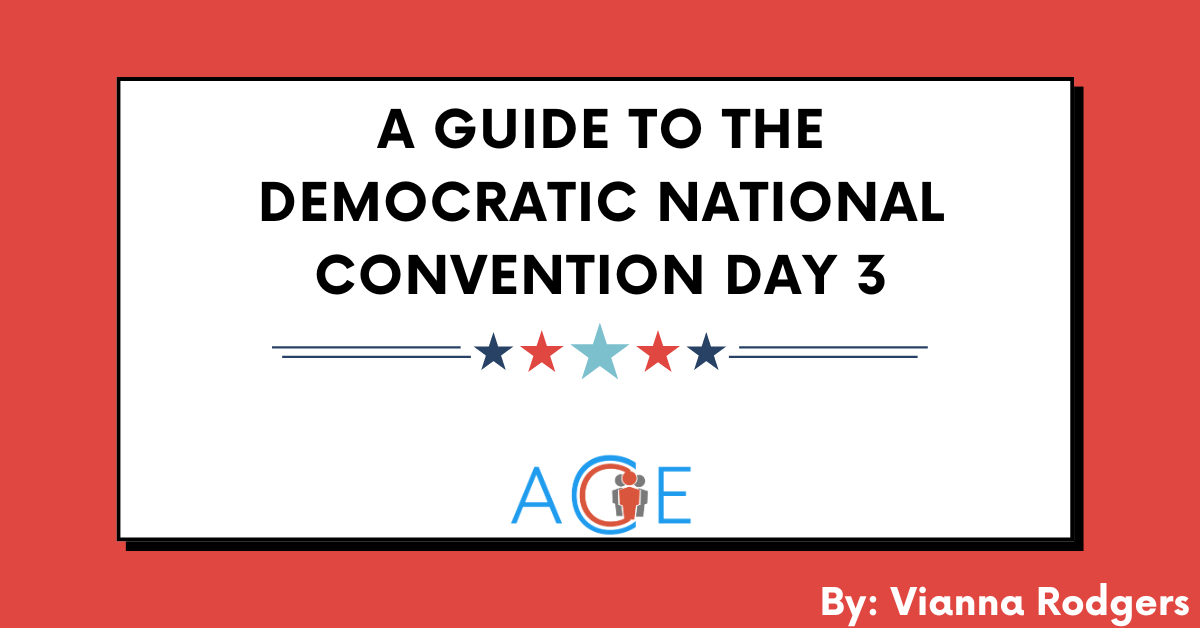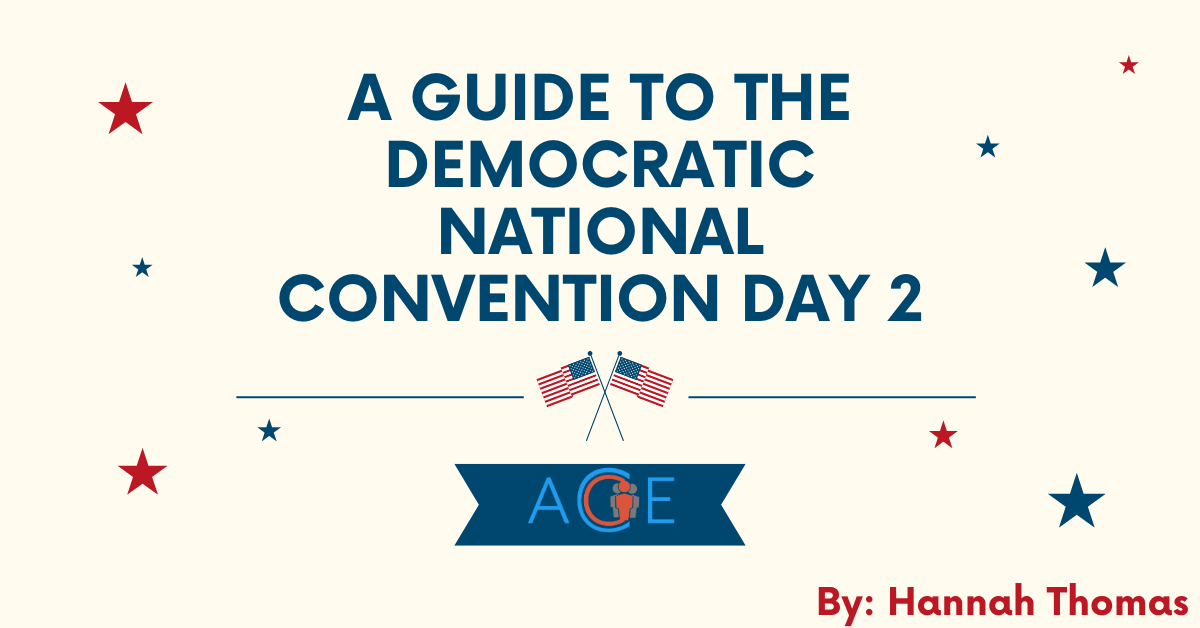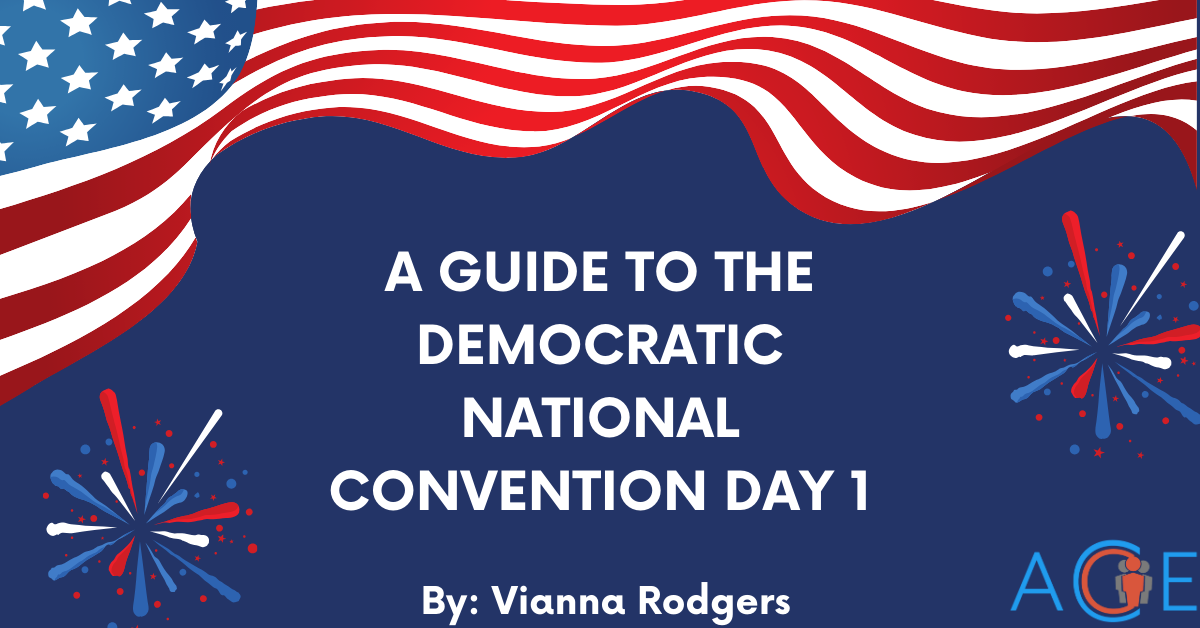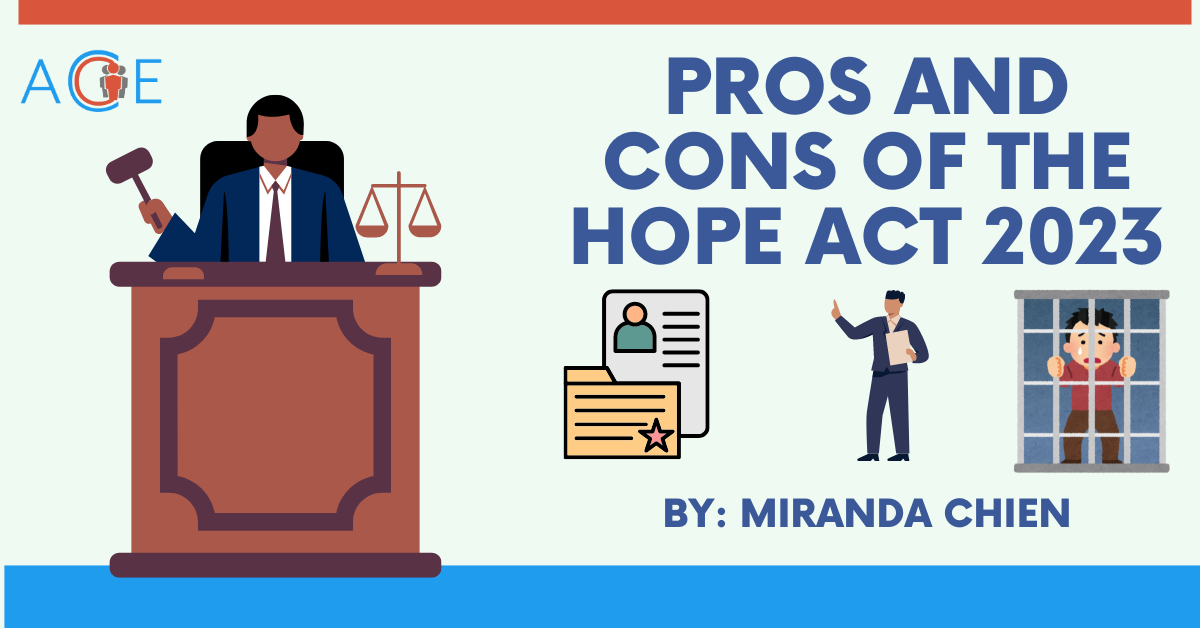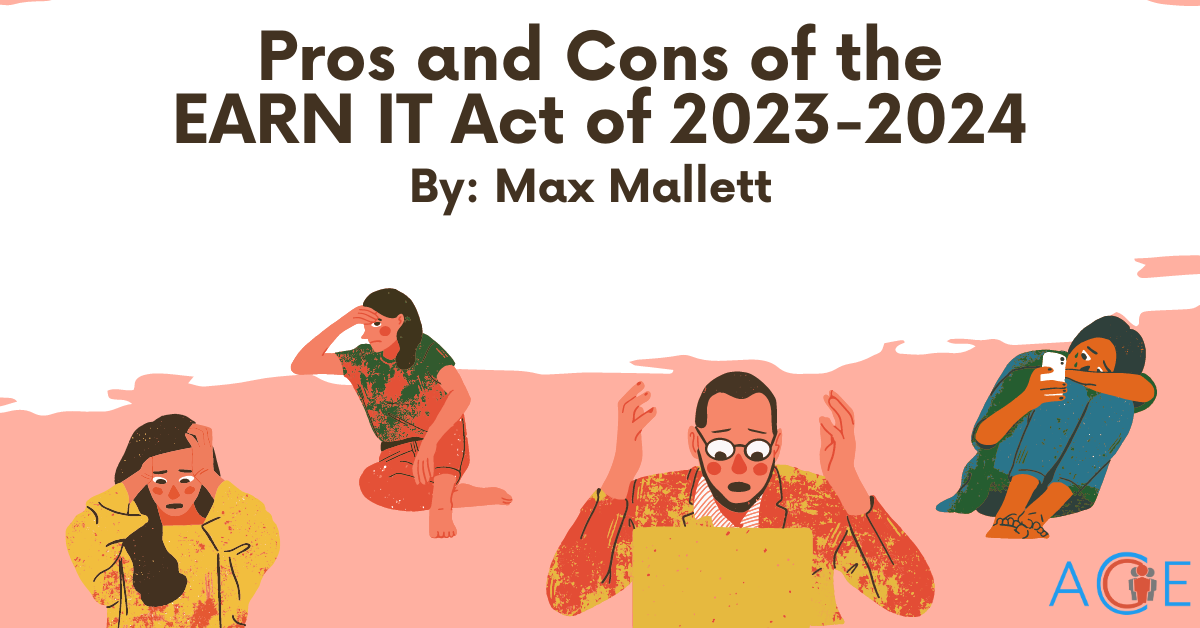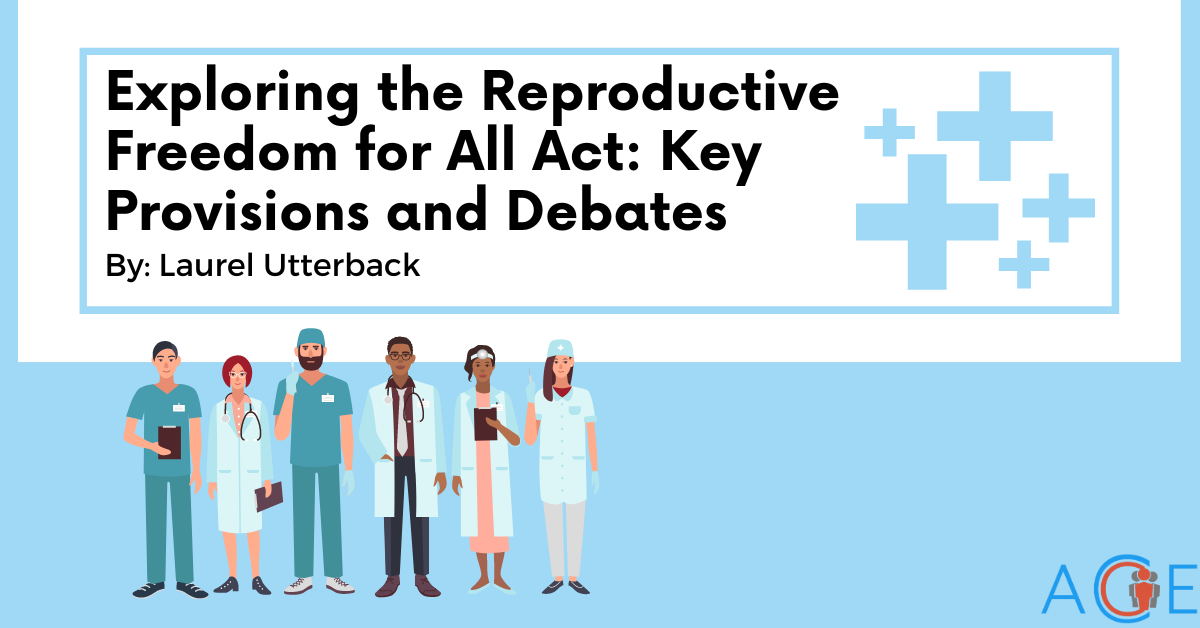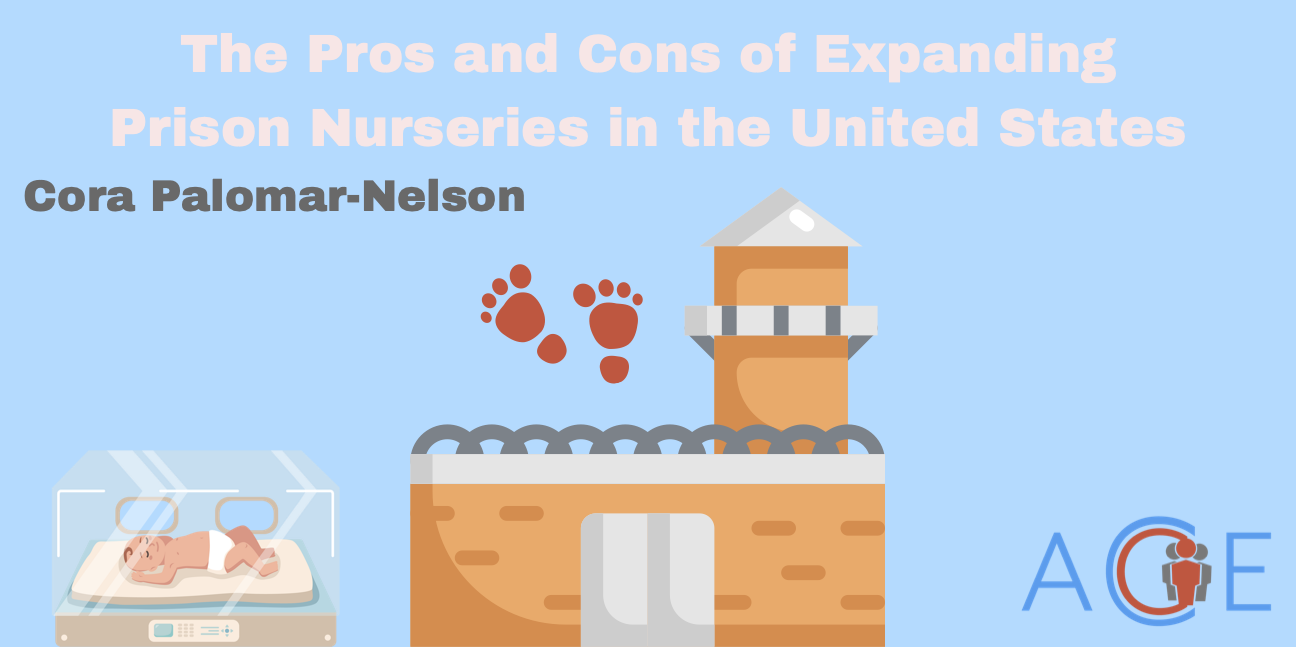Wednesday, August 21st, marked the third day of the Democratic National Convention. The theme for the night was “A Fight for Our Freedoms,” as the Democratic Party aimed to highlight Kamala Harris as a protector of America’s freedoms while portraying Donald Trump as a threat to those freedoms. The night featured speeches from prominent Democrats such as former President Bill Clinton, former Speaker of the House Nancy Pelosi, and Minnesota Governor and Vice Presidential nominee Tim Walz. The event also included performances by John Legend, Stevie Wonder, and Maren Morris, and was hosted by actress and comedian Mindy Kaling. The speakers addressed issues such as immigration, the January 6th attack on the Capitol, women’s reproductive rights, and lowering taxes for the middle class.
Olivia Troye, Former Trump Administration National Security Official: Olivia Troye shared her experience working under the Trump administration. She explained how Donald Trump sowed division, arguing that division is the “only way he can win.” She now supports Kamala Harris because she believes that, unlike Trump, Harris will protect “our freedom.” She then addressed her fellow Republicans, urging them to support Harris, stating that they are “not voting for a Democrat” but voting for democracy.
Geoff Duncan, Former Lieutenant Governor of Georgia: Geoff Duncan explained that he stopped supporting Donald Trump because of the former president’s attempts to overturn the results of the 2020 election. He urged his fellow Republicans to “dump Trump,” claiming that Trump has made the Republican party “crazy” and that the party now “acts like a cult” worshiping Trump. He then shifted his speech to demonstrate his support for Kamala Harris, stating that if you vote for Harris, “you are not a Democrat but a patriot.” His speech follows the overall message of Republicans who have parted from Trump, arguing that a vote for Harris is the right choice to protect democracy and return the Republican party to being a party focused on policy.
Bennie G. Thompson, Member of the U.S. House of Representatives, Mississippi: Bennie Thompson, who served on the January 6th committee, spoke about his history of preserving democracy, stating that his father never had the opportunity to vote due to Jim Crow laws. Therefore, Thompson dedicated his career to protecting votes against “violence and discrimination.” He then called out Donald Trump for encouraging conspiracy theories that discredited the 2020 election results. He urged people to “choose democracy, not political violence.”
Sergeant Aquilino Gonell, Retired United States Capitol Police Officer: Sergeant Aquilino Gonell spoke about his experience facing the insurrectionists on January 6th. He argued that instead of defending the Constitution and the officers who risked their lives on January 6th, Trump sided with those who intended to disrupt the peaceful transfer of power. He then voiced his support for Kamala Harris to become the “first female Commander in Chief.”
Andy Kim, Member of the U.S. House of Representatives, New Jersey: Andy Kim continued the Democrats’ message about January 6th, sharing that he was present in the Capitol during the certification of election results, which was then delayed after the attack on the Capitol by rioters. He described his reaction in the aftermath, stating that there was nothing to do but “pick up a trash bag” and clean up the mess left by the rioters. He painted an image of destruction and disruption encouraged by Donald Trump and encouraged supporters to vote for Harris to ensure a future of hope for their children.
Stevie Wonder, American Singer-Songwriter and Musician: Stevie Wonder gave a short speech before his performance that night, encouraging people to “do the right thing” by voting for Kamala Harris.
Kenan Thompson, American Comedian and Actor: Project 2025: Kenan Thompson came on stage with a copy of Project 2025, labeling it the “terms and conditions of a second Trump presidency.” Thompson spoke with several convention guests about policies outlined in Project 2025, such as eliminating protections for LGBTQ+ marriages, banning abortions, and eliminating the Department of Education.
Hakeem Jeffries, U.S. House of Representatives Democratic Leader: Hakeem Jeffries advocated for a living wage, affordable housing, strong public schools free from gun violence, and affordable health care. Jeffries likened Trump to an “old boyfriend,” stating that America broke up with him “for a reason.” Jeffries reasoned that Trump lost his reelection bid in 2020 because Trump’s tax plan supported the wealthy and he failed to control the COVID-19 pandemic. Jeffries contrasted Trump with Harris by stating that Harris and House Democrats will “always put people over politics” by lowering costs, fixing the immigration system, strengthening relationships between the police and community, combating the climate crisis, and protecting women’s reproductive freedoms.
Bill Clinton, 42nd President of the United States: Former President Bill Clinton began his speech by thanking President Biden for his service and for relinquishing political power to put the country’s best interests first. He then underscored that the American people get to decide who becomes president and asked them to consider what kind of president they want and what kind of future that president will lead the country into. He highlighted Harris’s background as a prosecutor and District Attorney, stating that her political history has shown her capability and experience in protecting the democratic process. Clinton then emphasized the Democratic Party’s message by stating that Harris is for the people while Trump acts only in his own interest, arguing that Harris will fight to ensure that every American “has the chance to chase their dreams,” while Trump is only about “me, myself, and I.” Calling Kamala Harris the “president of joy,” Clinton argued that she is the president the country needs.
Nancy Pelosi, Speaker Emerita of the U.S. House of Representatives: Nancy Pelosi called the Biden presidency “one of the most successful presidencies in modern America” and stated that Kamala Harris can take America to “new heights.” She then praised Tim Walz for his service in the military and in Congress as a member of the House of Representatives, arguing that Harris and Walz are leaders who can push the Democrats to victory this November.
Catherine Cortez Masto, United States Senator, Nevada: Catherine Masto spoke about her relationship with Kamala Harris as they worked together securing the southern border while serving as attorneys general of their respective states, noting Harris’s work fighting for victims of human trafficking. Masto also highlighted how close her own Senate race was, coming down to just around seven thousand votes, urging her supporters to show up to vote.
Josh Shapiro, Governor of Pennsylvania: Josh Shapiro criticized Trump’s policy views, referencing Trump’s support of book bans and abortion bans, arguing that “real freedom” is supporting children’s education, protecting and investing in communities, and allowing people to “marry who [they] want” and “start a family on [their] own terms.” Speaking to the people, he encouraged them to vote for Harris and Walz to “secure our rights, protect our freedoms, and protect our democracy.”
Oprah Winfrey, Businesswoman and Former Talk Show Host: Oprah began her surprise appearance at the DNC by quoting former congressman John Lewis, saying, “No matter what ship our ancestors arrived on, we’re all in the same boat now.” In doing so, she encouraged Americans to work together, regardless of background, to drive America forward. She stated that this election is not about “us and them” but “you and me,” encouraging unity and rejecting loyalism to one specific candidate. She then revealed that she is a registered independent before calling on “all the independents and undecided” to vote, noting that “values and character matter most of all” in order to reach beyond the Democratic voting base.
Wes Moore, Governor of Maryland: Wes Moore reinterpreted Trump’s slogan of “Make America Great” by claiming that making America great does not include telling people “they are not wanted,” continuing the Democrats’ message of inclusion and unity. He then honored the six construction workers who died after a cargo ship crashed into the Francis Scott Key Bridge in Baltimore earlier this year as immigrants who knew “America was big enough for them too,” and noted that after the accident, Harris personally called him to demonstrate her support. He then called on the people to elect someone willing to “believe in the best of us,” stating that leader is Kamala Harris.
Pete Buttigieg, Secretary of Transportation and Former South Bend, Indiana, Mayor: Pete Buttigieg remarked on Donald Trump’s status as a convicted felon going up against a former prosecutor. He then criticized Trump’s running mate, JD Vance, for his comments on those without children, arguing that Vance’s comments show how Trump’s campaign is doubling down on “negativity” and “darkness.” He insisted that politics can be uplifting and “a kind of soulcraft.” He labeled the Republican party as divisive and exclusionary, arguing that they paint those who do not agree with their political view as the “enemy.” He then argued that this November, the people get to choose “better politics,” and that is what “Kamala Harris and Tim Walz represent,” describing this election as a battle between light and dark politics.
Amy Klobuchar, United States Senator, Minnesota: Introducing Tim Walz, Amy Klobuchar highlighted Tim Walz’s character and background as a former public school teacher, coach, and army officer. She underscored that he has brought Minnesota together, and as running mate to Kamala Harris, he will help unite America.
Tim Walz, Governor of Minnesota and Democratic Vice President Nominee: Introduced by a former student, Tim Walz arrived on stage as the keynote speaker of the night. He highlighted his rural roots, growing up in a small town of around four hundred people, his military service, and his work as a social studies teacher and football coach to demonstrate his commitment to the “common good.” Describing his underdog story as a public school teacher with “zero political experience,” Walz recounted his journey from being elected to Congress to becoming Governor. He stated that in these leadership positions, he learned how to “compromise without compromising [his] values.” He then listed his accomplishments as Governor, such as cutting the cost of prescription drugs and passing a law to ensure free breakfast and lunch in schools. Walz criticized Donald Trump and JD Vance for having an agenda that “serves nobody except the richest and most extreme amongst us” and referenced his viral comments on the Republican Party, calling Trump’s agenda “weird” and leading the crowd in chants of “we are not going back.” He concluded his speech with a “pep talk,” referencing his days as a football coach, and with chants of Harris’s campaign slogan, “When we fight, we win.”
